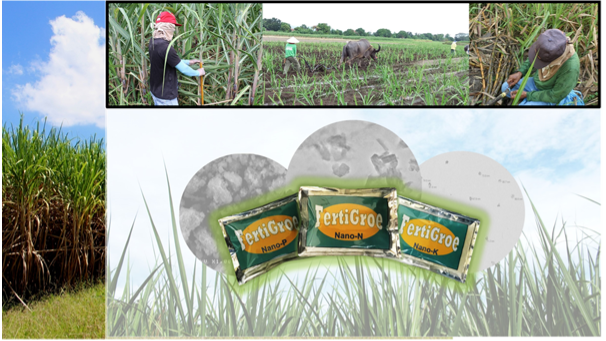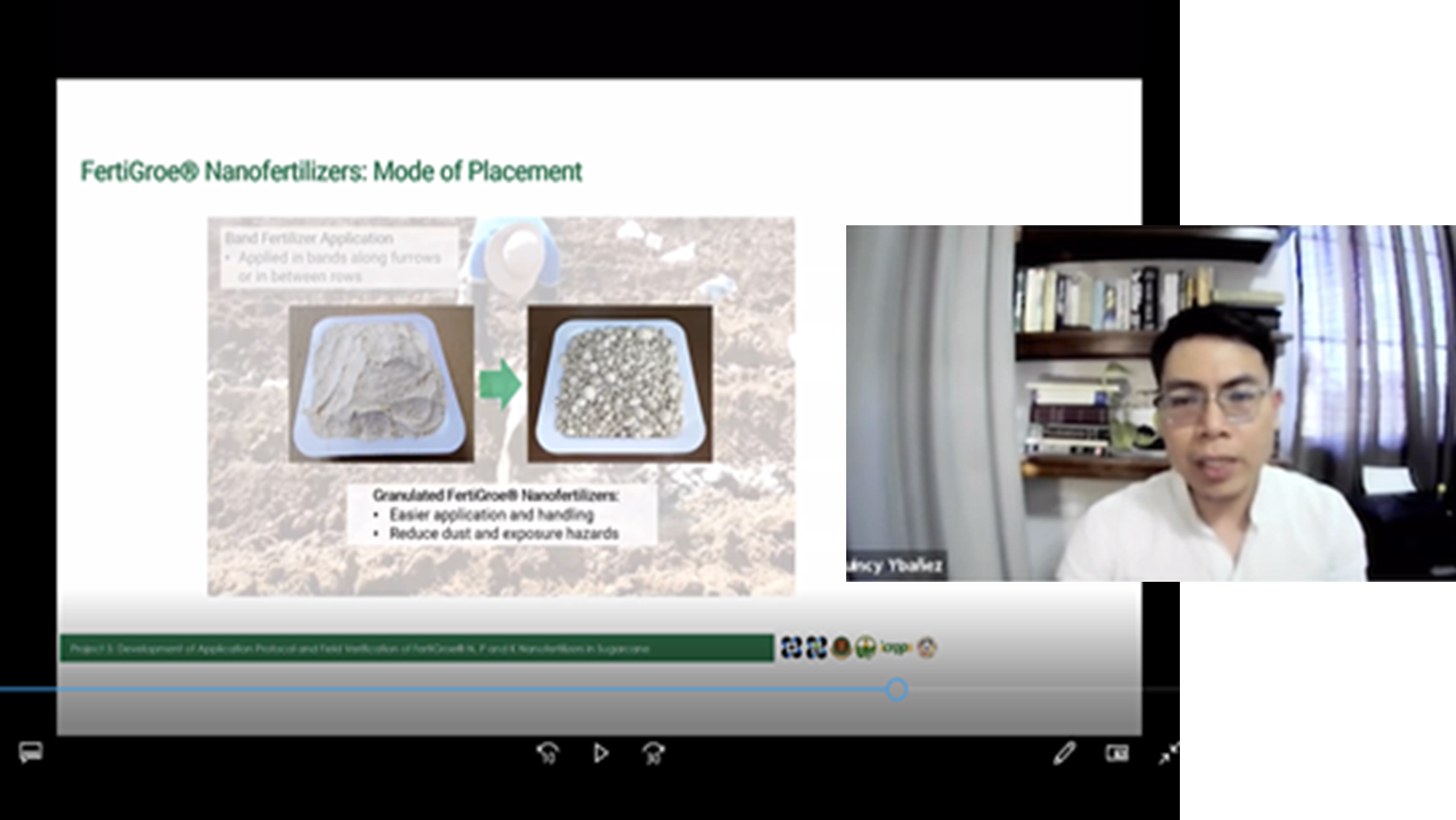
Sugarcane farmers can save more with less frequency of fertilizer application and with less amount of fertilizers without compromising yield and other gains.
This is possible with Fertigroe® nanofertilizers developed by the University of the Philippines Los Banos (UPLB) researcher-scientists.
UPLB developed Fertigroe® nanofertilizers using nanotechnology- a novel approach to increase nutrient efficiency in crops. The optimized production process, application protocol, and field verification process were conducted through the funding support of the Department of Science and Technology (DOST) and DOST’s Philippine Council for Agriculture, Aquatic and Natural Resources Research and Development (PCAARRD).
Findings show that Fertigroe® nanofertilizer application in sugarcane is more efficient and less costly. With this product, frequency of application can now be reduced from 2-3 times to only once. Plant growth and yields were improved with proper cultural management practices.
In a recently held webinar themed, “Savoring the Sweetness of Sugarcane,” UPLB Assistant Professor Quincy E. Ybañez, discussed in detail the use of Fertigroe® in sugarcane production. According to Ybanez, Fertigroe® nanofertilizers are slow-release formulations of nitrogen (N), phosphorus (P), and potassium (K). These nutrients are encapsulated in a “carrier,” which protects the nutrients from direct contact with the soil environment. These are “slow-release” because the nutrients are set free to plant parts just in time or at a point in the growth stage where plants need them most. This makes nutrient use more efficient and effective.
Fertigroe® nanofertilizers vs conventional fertilizers
Ybañez explained that the usual timings of applying fertilizers on sugarcane are during planting, after two months, and four months after planting. Planting of cane seeds takes place from October to May. These are placed along furrows spaced from 1 meter to 1.5 meters. The fertilizer is placed on the soil before cane seeds are planted. Irrigation, pest control, and disease management are done during tillering and grand growth stages of the plant. Propping and detrashing are likewise done when necessary. Sugarcane is ready for harvest in 9-12 months, depending on the variety used.
Since synthetic or chemical fertilizers are highly soluble in water, they leach away into the groundwater. Hence, plants don’t fully benefit from them; less nutrients are left for plant uptake. Besides, fast-release chemical fertilizers with high nitrogen content are susceptible to diseases; destroy beneficial microbes present in the soil; and affect soil fertility in the long run.
Moreover, Ybañez emphasized that the demand for N and P is highest during the tillering stage because these nutrients are needed for growth and elongation of tillers. On the other hand, a sufficient amount of K is important during ripening as this contributes to the sweetness of sugarcane. With Fertigroe® nanofertilizers, nutrient availability coincides with the demand of sugarcane for optimum growth. Hence, losses are prevented and nutrients are made available to the plants to the fullest. Rate of fertilizer application can be reduced by 45%. One-time basal application also reduces fertilizer exposure hazard and labor costs.
Improved growth and yield from Fertigroe®

Field experiment for the fertilizer rate and timing of application of Fertigroe® N, P, and K was conducted in La Granja Research and Training Station (LGRTS), La Carlota City in Negros Occidental. Ybañez reported that growth and yield of sugarcane improved in plots with Fertigroe® treatments. Fertigroe® showed yield gains of up to 95 ton-cane per hectare (TC/ha), which is more than the annual average of 60 TC/ha in the Philippines.
Ybañez said that proper irrigation and management of sugarcane and reduced fertilizer requirement resulted in net income amounting to more than P117,000/ha. Conventional fertilizer produced only P58,000. Hence, use of Fertigroe® can provide an added income of up to P59,000/ha.
Applying Fertigroe® nanofertilizers is easy. These are placed along the furrow, then covered with a thin layer of soil before planting the cane seeds. For ratoon, the nanofertilizers are applied along the side at about 2 inches from the roots, prior to hilling-up. UPLB granulated the nanofertilizers for a safer and easier application.
The recommended rate and timing of application were based on the optimization and field validation trials conducted by UPLB. This project was spearheaded by the College of Agriculture and Food Science (CAFS) of UPLB under the leadership of Dr. Pearl B. Sanchez and staff Darryl Nelo S. Aguila, Jessabel B. Magtoltol, Quincy Ybañez, and Angel D. Manalo. Field trials were conducted in cooperation with UPLB-LGRTS headed by Dr. Emmanuel G. Samson with staff Maricon E. Geopolani and Shenie A. Hilado (Ofelia F. Domingo, DOST-PCAARRD S&T Media Services).
